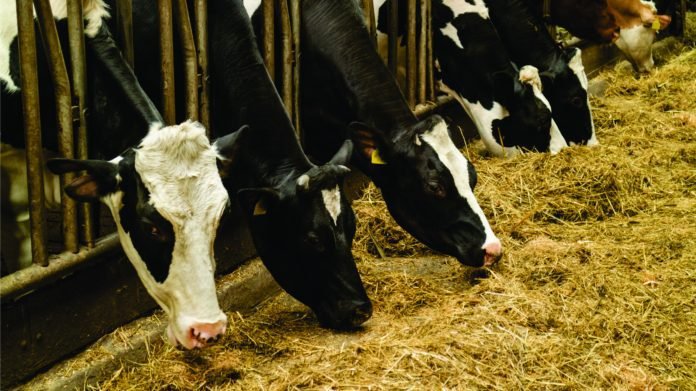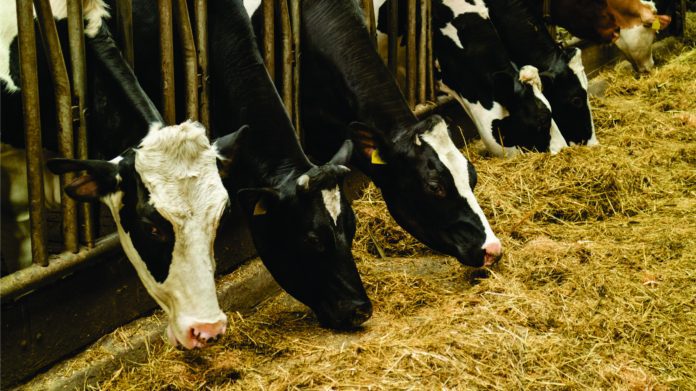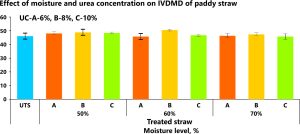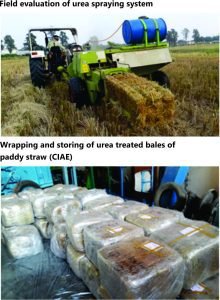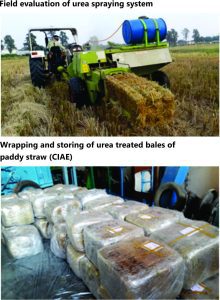

In the wheat and rice cropping system prevalent in many parts of Northern and North Western India, farmers store an adequate amount of wheat straw to feed their animals throughout the year. They prefer to use wheat straw as roughage feed for their animals over rice straw because it is more palatable and digestible. Rice straw is less preferred due to its higher silica content, making it more fibrous and less digestible.
Once the rice crop is harvested, it is necessary to clear the field immediately to prepare for the sowing of the wheat crop. Unfortunately, poor farmers do not have the means to store rice straw and therefore opt to remove the unwanted straw from the field. This, however, is a labour-intensive process that is difficult for them to afford. Burning the straw in the field is the only viable option for these farmers.
During the winter months, Delhi is covered in smog caused by the burning of straw in the fields of Punjab, Haryana, UP and Rajasthan. This problem has persisted for over three decades and despite efforts by farm scientists, a viable solution for collecting and adding value to paddy straw has not been found.
A solution seems to be in sight
A Solution has been developed in an inter-institutional project between ICAR-Central Institute of Agricultural Engineering in Bhopal, Madhya Pradesh and ICAR-National Institute of Animal Nutrition and Physiology in Bangalore.
The “Urea Solution Spraying System” (USSS) is created as a way to treat paddy straw with urea solution before the baling process, while in the field. The system includes a plastic tank, spray boom with flat fan nozzles, HTTP pump, hose pipe, strainer, pressure relief valve, and pressure gauge. It is designed to spray urea solution on loose straw during conveying to the compression chamber of the baler. The pump’s pressure relief valve is used to adjust the discharge rate of the urea solution.
The system was tested in both paddy and wheat straw fields and was also demonstrated on a farmer’s field. To prepare the urea solution, 8 kg of urea was mixed with 100 litres of water, giving it a concentration of 8%. After treatment, the average weight of paddy bales increased by 45% to 50%. Observations showed that the straw baler with urea spraying system had a working capacity of 109 bales/h for a paddy straw load of 8.3 t/ha. Urea-treated bales were wrapped in polyethylene sheet and left to cure for three weeks, allowing the straw to be effectively treated through the process of “Ammonification.”
Urea spraying on straw followed by immediate bailing – A game changer
During the curing process, the urea converts to ammonia which penetrates the straw fibers and breaks down some of the bonds of cellulose and hemicellulose from lignin. This makes it easier for rumen microbes to ferment the cellulose and hemicellulose, producing acetate, a precursor for long-chain fatty acids in the liver. The ammonia also attaches to straw particles and is converted to amino acids which is then used by rumen microbes for protein synthesis. An in vitro experiment showed that the urea treatment increased the straw’s crude protein, dry matter digestibility, and metabolizable energy to 85%, 3.4% and 6.3% respectivelyas compared to the untreated straw.
The retrofit cost of this spraying system is INR 30000 with a treatment cost of INR 0.50 per kg of straw. This innovation is a promising way to prevent stubble burning after paddy harvesting, reducing environmental pollution, and improving the straw’s nutritive value and digestibility.
by Dr Satya Prakash Kumar, ICAR-Central Institute of Agricultural Engineering, Bhopal






